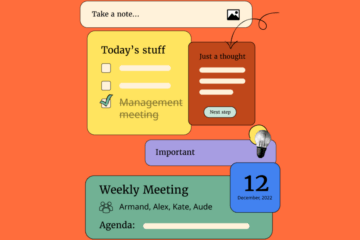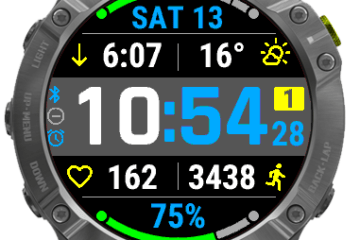Despite his parents’ protestations, this summer 17-year-old Rustin Rassoli packed his bags and left his family home in Houston for San Francisco. Unlike the hippie teens who beat a trail there almost 50 years ago, Mr Rassoli was not there to turn on, tune in, drop out. In fact, the opposite: he was there for a three-week internship at After School, a controversial app that has proved popular with American high school students but has drawn criticism from some parents and teachers for providing a forum for cyberbullying.
“They understand us,” says Mr Rassoli of the founders. “I can post without people judging me. We can talk about our crushes. It’s a comfortable environment.”
What he likes about the app, which he uses alongside Snapchat, the multimedia messaging app popular with teens, is that “no adult can interfere” because, after all, as he points out: “Anything cool with the kids isn’t cool with the parents.”
The smartphone app provides a forum for millions of teenagers to share their passions and crushes — as well as slurs — anonymously, away from the prying eyes of their parents and teachers. Its creators claim the private social network that allows students to view and share posts only at their own high school, is being used at more than three-quarters of US high schools. Cory Levy, 24, the co-founder of After School, says the intention was to give teens a “place they can call home without their grandparents being there” — there are too many relatives on Facebook these days.
For teens, swiping is second nature and mobile applications are the gateway to a world of gaming, socialising and entertainment. Neil Campling, head of global TMT research at Northern Trust Securities, observes: “Teens have grown up in the app economy. If you ask them who is the biggest car company in the world they’d probably say Uber. It’s what they’re used to.” Yet for every Snapchat there are countless others that sink without a trace.
App Annie, the market research group, finds that in the US, average daily time spent on apps increased about 40 per cent between 2014 and 2015. The age group that spent most time on apps was 13 to 24-year-olds, staying 75 per cent longer than those aged over 45. However, unlike older generations, younger users tend to have shorter attention spans. They are, according to App Annie, more “likely to be quickly in and out of an app: you need to get their attention quickly”. Amanda Lenhart, researcher at the Data & Society Research Institute, notes this is a fickle group. “They jump from app to app.”
Social is key for teens, who are discovering their identity in part through their likes and dislikes as well as through friendships. They have more time to devote to communicating than their parents, otherwise distracted by tedious tasks of running a house and juggling work. Even gaming, which has a reputation for being solitary, has changed, helped by egaming, points out Mr Campling. “It’s not about a spotty boy playing in their bedroom any more.”
The app Musical.ly, which is a rare example of an app founded in China that has mass appeal in the west, is not popular only because it allows users to make music videos in their bedroom, lip-syncing to favourite songs, but because of the community they tap into.
Depop, the social shopping app, popular with young millennials and teens, prides itself on creating communities of influencers and like-minded shoppers. Tainá Vilela, head of partnerships at Depop, describes it as “an endless garage sale but also people you want to hang around with”, be they “sneakerheads” or reality television stars. It has the edge on eBay for teens, says Mr Campling, because it is “a live discussion [with] people sharing a common interest”, whereas the older marketplace is about transactions.
According to a report last year by Pew Research Center, more than half of American teens have made a friend online, which might panic parents fearful of cybergrooming.
But also there is much concern about the impact of smartphones on empathy and relationships. Sherry Turkle, author of Reclaiming Conversation: The Power of Talk in a Digital Age, described in an interview watching teens in school canteens glued to their phones rather than talking. She fears it is harming teens’ capacity for empathy. “Face-to-face conversation is the most human and humanising thing that we do; it’s where we learn to put ourselves in the place of the other.”
It is important to stay close to the audience, Mr Levy says. It helps that the co-founder is not much older than his customers but that in itself is not enough, he says.
“I feel like an older brother.” The gulf between him and the customers is wide enough that language and ways of communicating can be alien. That is why the company has employed people who have worked with the age group for a long time and go into high schools, as well as recruited teen ambassadors. “We look at what kids are talking about at school.” For example, hearing the term “ship” — which is short for relationship and means two people would make a good couple — they introduced a “ship feature” on Valentine’s day. “It was an example of listening to their vocabulary,” Mr Levy says.
Yet this age group also needs care, particularly when it comes to cyberbullying. In 2013, Ask.fm, a social networking site popular among teens, was criticised by David Cameron, then UK prime minister, for not tackling bullying.
When After School was launched in November 2014, its rapid growth was not welcomed by some parents and teens, including one who organised a Change.org petition for its closure, denouncing the app for allowing “gay bashing and hate mongering, cyber bullying, threats of physical bullying”.
The app’s usual beta phase, testing a product with a small number of users and changing in response to their use and needs, was blown up by its instant popularity. Within two weeks they had, Mr Levy says, gained 100,000 members.
Apple removed it from the store within a month of its launch. A new version was released in April last year, with features that included crisis-counselling services, strict moderation and the ability to report and remove abusive posts.
This year, After School raised $16.4m in Series A funding from investors, indicating that security features are now more robust and that the customer demographic is attractive.
Yet it is proof that the feature that app creators want — an ability to go viral — can backfire if it spreads too early.
Search for revenues: Advertising can turn users off
Persuading teenagers to download it is one thing, making it pay is another. Amanda Lenhart, of the Data & Society Research Institute, says that younger teens have to get past their gatekeeper parents if they want to buy something online, which can pose a dilemma: “If they agree to pay for something, do you want them to approve of it?”
While After School has recently received $16.4m in funding, it has yet to monetise the app. Teenagers have limited funds and expect free content.
The audience is one that many advertisers would like to capture. Despite teenagers’ limited spending power, the hope is they would remain loyal to a brand as they start earning.
“It’s easy to slap an ad on the app,” says co-founder Cory Levy, “but it’s probably not effective.” He hopes to integrate advertising into the user experience, for example, if a member sends a message it might integrate the ad with that: “Want to see Jason Bourne with Cory?” But Ms Lenhart strikes a note of caution. “Some think it’s fine, some hate it and find it super creepy.”
[Source:-FT]



